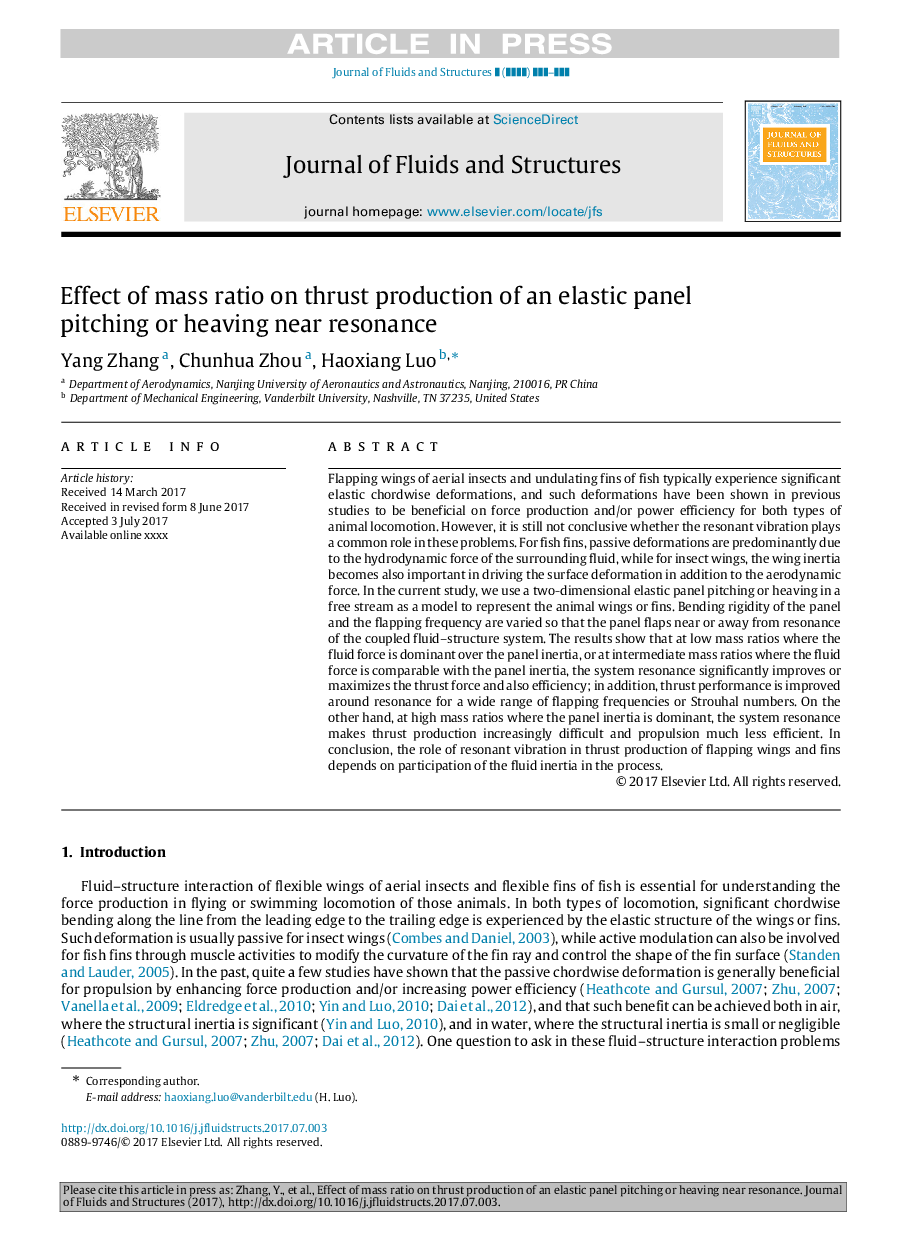| Article ID | Journal | Published Year | Pages | File Type |
|---|---|---|---|---|
| 5017404 | Journal of Fluids and Structures | 2017 | 16 Pages |
Abstract
Flapping wings of aerial insects and undulating fins of fish typically experience significant elastic chordwise deformations, and such deformations have been shown in previous studies to be beneficial on force production and/or power efficiency for both types of animal locomotion. However, it is still not conclusive whether the resonant vibration plays a common role in these problems. For fish fins, passive deformations are predominantly due to the hydrodynamic force of the surrounding fluid, while for insect wings, the wing inertia becomes also important in driving the surface deformation in addition to the aerodynamic force. In the current study, we use a two-dimensional elastic panel pitching or heaving in a free stream as a model to represent the animal wings or fins. Bending rigidity of the panel and the flapping frequency are varied so that the panel flaps near or away from resonance of the coupled fluid-structure system. The results show that at low mass ratios where the fluid force is dominant over the panel inertia, or at intermediate mass ratios where the fluid force is comparable with the panel inertia, the system resonance significantly improves or maximizes the thrust force and also efficiency; in addition, thrust performance is improved around resonance for a wide range of flapping frequencies or Strouhal numbers. On the other hand, at high mass ratios where the panel inertia is dominant, the system resonance makes thrust production increasingly difficult and propulsion much less efficient. In conclusion, the role of resonant vibration in thrust production of flapping wings and fins depends on participation of the fluid inertia in the process.
Related Topics
Physical Sciences and Engineering
Engineering
Mechanical Engineering
Authors
Yang Zhang, Chunhua Zhou, Haoxiang Luo,
